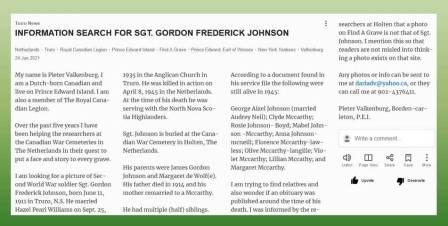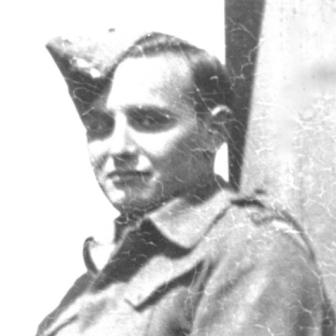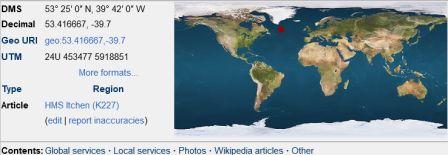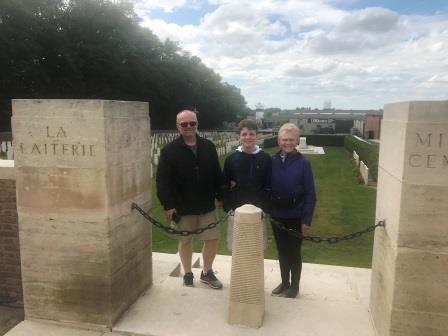July 27, 2021. Several weeks ago, as Pieter was jogging back home after a long run through our neighbourhood, he was stopped by Wayne Quigley. “…Pieter, I’ve got a story for you!...” Wayne said. “…My great-uncle, Bob Dickie, died in a plane that crashed off the English coast during WW2. The plane was returning from a bombing sortie in Germany...”
With an intro like that, Pieter couldn’t resist learning more. That evening, we visited with Wayne and Janet Quigley of Augustine Cove.

Pieter, centre, with Wayne and Janet Quigley. (Photo credit: Daria Valkenburg)
Born October 13, 1921 in Carleton (now Borden-Carleton), Robert ‘Bob’ James DICKIE was the son of John William Dickie and Mary Ann McClure. His sister, Marion Waddell, was Wayne’s grandmother.
At the time Bob was born, the family lived on Dickie Rd in Carleton, so named because the family had been the first to build a house on that road. Wayne thought that Bob’s father worked “… at the CNR yard in Borden….” (CNR refers to Canadian National Railways.) “…There used to be a railway crossing that went right through the road...”

Dickie Rd in Borden-Carleton was named after the Dickie family. (Photo credit: Pieter Valkenburg)
The railway is long gone, but the street is still called Dickie Rd. “…The family moved to Charlottetown ….” where Bob’s father worked for the CNR.
As Wayne didn’t have a good photo of Bob Dickie, he contacted his cousin, Betty Lou Wood, whose father, John Thomas, was the brother of Bob and Wayne’s grandmother Marion.
Betty Lou recollected that before the family moved to Charlottetown, her grandfather “...worked as a lobster fisherman during lobster season, an ice-boatman during winter, as well as operating a family farm year round…” The ice boat stopped running in 1917, when it was replaced by a ferry operated by the CNR.

Robert ‘Bob’ James Dickie. (Photo courtesy Betty Lou Wood)
… Uncle Bob was always the hero of the family….
When we met with Betty Lou and her daughter Louann, Betty Lou told us that her uncle “…was always the hero of the family. His picture is always displayed from late October to Christmas in my house...”

Pieter with Betty Lou Wood. (Photo credit: Daria Valkenburg)
Betty Lou’s granddaughter, Eve Johnson, did a Heritage Fair Project on Bob Dickie. In her project, she wrote about his youth and hobbies. Eve wrote that “…he was an excellent skater and swimmer and he also loved to dance….. As a young man he was recognized as having saved two young boys from drowning...”
After graduating from high school, he “…enrolled in a business course, and family legend is that he said he eventually wanted to study to become a lawyer….”
… The training received in the RCAF was extensive….
On October 25, 1940, Bob enlisted in the Royal Canadian Air Force (RCAF) in Charlottetown. A month later his training began, first in Brandon, Manitoba at the RCAF Training Facility No 2 Manning Depot. (For a photo of the building, see http://pastforward.winnipeg.ca/digital/collection/berman/id/2366)

Group photo taken in front of the train in Portage La Prairie, Manitoba, which was enroute to the RCAF Training Facility in Brandon. (Photo courtesy Betty Lou Wood)
NOTE: The back of the back photo identifies the men. Back, left to right: Leonard BERRIGAN, BANKS, Jim ROSSUMS, John HANSON, Foster FISHER, Bob DICKIE, Charles WOODSWORTH. Front, left to right: WRIGHT, Prentis ANDREW, Bill MACDONALD, Rolf BOYLE.
A month later he was sent to the No 7 Equipment Depot in Winnipeg for additional training. On January 27, 1941, he went to Regina, Saskatchewan to the No 2 Initial Training School (ITS) for 4 weeks before returning back to Brandon on March 10, 1941. (For more information, see https://en.wikipedia.org/wiki/List_of_British_Commonwealth_Air_Training_Plan_facilities_in_Canada)
On April 27, 1941 he was sent to the No 2 Wireless School in Calgary, Alberta for training as a wireless operator. He was entitled to wear a Wireless Operator’s Badge (called Wings) as of September 14, 1941, according to his training report.
On September 12, 1941 he was sent to the No 3 Bombing and Gunnery School in MacDonald, Manitoba to train as an air gunner. On October 13, 1941 he was authorized to wear an Air Gunner’s Badge (called Wings). The chief instructor noted that he was ‘responsible and conscientious’.

Three from PEI: Bob Dickie, far left, after receiving his Air Gunner’s Badge. Centre: Cliff Campbell of Charlottetown. Right: unknown. (Photo courtesy Betty Lou Wood)
… Bob is assigned to the RAF….
On October 14, 1941 he was posted to the No. 1 ‘Y’ Depot in Halifax, Nova Scotia, the embarkation point for leaving Canada for the United Kingdom the next day. Upon arrival in England on November 2, 1941, he was assigned to the RAFTP (Royal Air Force Trainees Pool).
He was first at the No. 3 Personnel Reception Centre in Bournemouth. On January 20, 1942 he was sent to the No 22 Operational Training Unit (OTU), RAF Wellesbourne in Mountford, Warwickshire, which trained aircrew for night bombing raids in Wellington aircraft.
By June 1942 he was participating in bombing runs with No 115 Squadron, RAF. On June 27, 1942, during a bombing run to Bremen, the plane was attacked by a German nightfighter. Records indicate that the bomb aimer and Bob were wounded, but rear gunner Sgt Bill MCCANN was killed.
Eve Johnson recorded in her Heritage Project that “…Uncle Bob came home to Charlottetown to recover from his wounds…” It wasn’t a long stay as by August 9, 1942 he was back in England and participating in more flying missions.
On November 11, 1942 he was sent to the Bomber Development Unit. Then, on September 17, 1943 he was assigned to No 97 Squadron, RAF. This was a Pathfinder unit, whose responsibility was to locate and mark targets with flares, which a main bomber force could aim at, increasing the accuracy of their bombing.
Pathfinders had to fly at a lower altitude than the main bomber force, making their sorties more dangerous than if they could fly at a higher altitude. (See https://en.wikipedia.org/wiki/Pathfinder_(RAF) and https://en.wikipedia.org/wiki/No._97_Squadron_RAF)
After flying in a number of aircraft, by October 1943 Bob’s squadron was using Lancaster aircraft.
… The last flight of Lancaster JB312….

Crew beside Lancaster JB312. Bob Dickie is on the far right. (Photo courtesy Betty Lou Wood)
Just after midnight on February 21, 1944, the crew of Lancaster JB312 left RAF Bourn Airfield for Stuttgart, Germany. It was Bob Dickie’s 37th sortie and his last flight, one that he and the rest of the crew did not survive. (It’s unlikely that the photo above was taken just before this last flight, as crew would fly the same plane several times.)
According to the crash report, while over Stuttgart, the plane “…collided with another aircraft and probably received flak damage. The H2S blister was torn away, the fuselage was badly damaged, and flaps also received damage.…”
By a miracle, the plane did return to England. However, on return to the base, the plane “…crashed on approaching runway, presumably as the result of the damage received over the target…” All of the crew members lost their lives.
The crew members for this last flight of Lancaster JB 312 were:
- R. S. EMERSON, Captain
- A. J. NEWELL, Flight Engineer
- J. WORTH, Navigator
- J. A. BARTHOLOMEW, Air Bomber
- Robert ‘Bob’ James DICKIE, Wireless Operator
- W. G. DUNCAN, Mid Gunner
- G. W. WOOD, Rear Gunner
Bob was buried at Cambridge City Cemetery on February 24, 1944, along with other comrades who lost their lives. (See https://en.wikipedia.org/wiki/Cambridge_City_Cemetery)

Original grave marker for Bob Dickie. (Photo courtesy Betty Lou Wood)
Although Bob’s original grave marker said Warrant Officer, he had received a promotion to Pilot Officer the day before his death. His permanent Commonwealth War Graves Commission headstone indicates this. (See https://www.findagrave.com/memorial/32378762/robert-james-dickie)
Thank you to Wayne and Janet Quigley, Betty Lou and Louann Wood, and Eve Johnson for the photos and information about Bob Dickie. Thank you also to Historic Interpretation/Museum Planner Don Smith, who helped with plane identification and the planes used in RCAF training schools, as well as clarifying the Pathfinder role of No 97 Squadron and the final flight of Lancaster JB312.
If you have information to share about Bob Dickie and the other airmen mentioned, or can help in identification of the men in the various photos, please contact Pieter at dariadv@yahoo.ca, comment on the blog, or send a tweet to @researchmemori1.
If you are reading this posting, but aren’t following the blog, you are welcome to do so. See https://bordencarletonresearchproject.wordpress.com or email me at dariadv@yahoo.ca and ask for an invitation to the blog.

You are also invited to subscribe to our YouTube Channel: On The War Memorial Trail With Pieter Valkenburg: https://www.youtube.com/channel/UCJ591TyjSheOR-Cb_Gs_5Kw.
© Daria Valkenburg
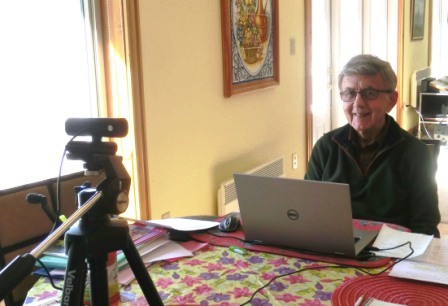
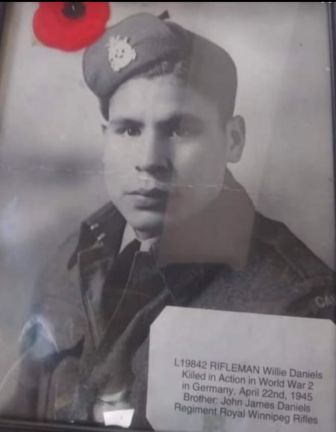

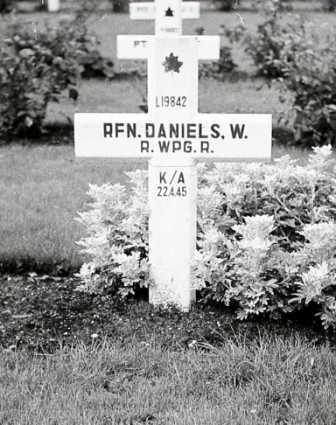


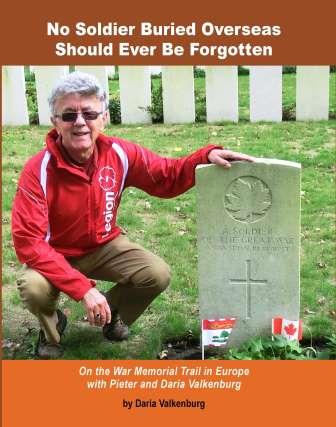 4 countries, 6 weeks, 7,000 km – an unforgettable war memorial journey in Europe….
4 countries, 6 weeks, 7,000 km – an unforgettable war memorial journey in Europe…. 

